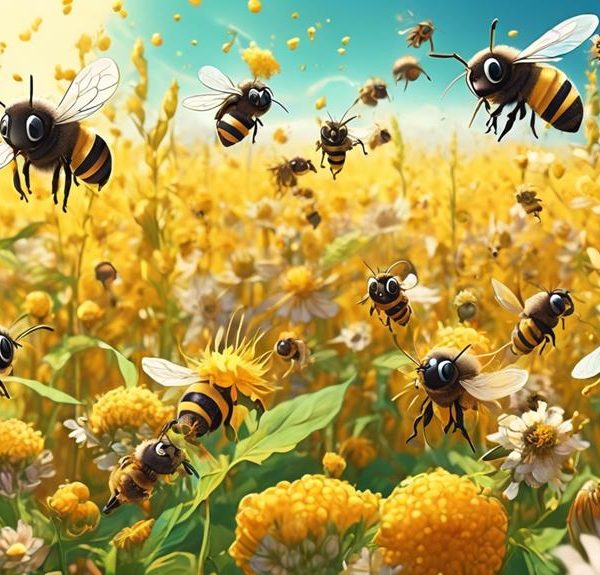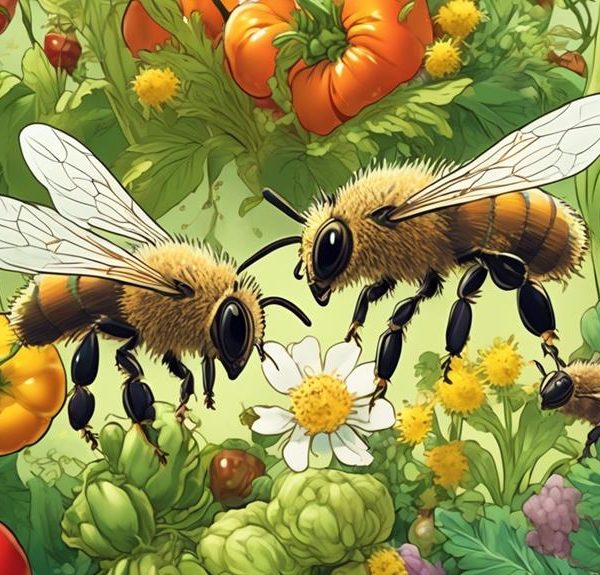Often overlooked, mason bees play a complex role in tomato pollination – dive in to discover their intriguing contribution.
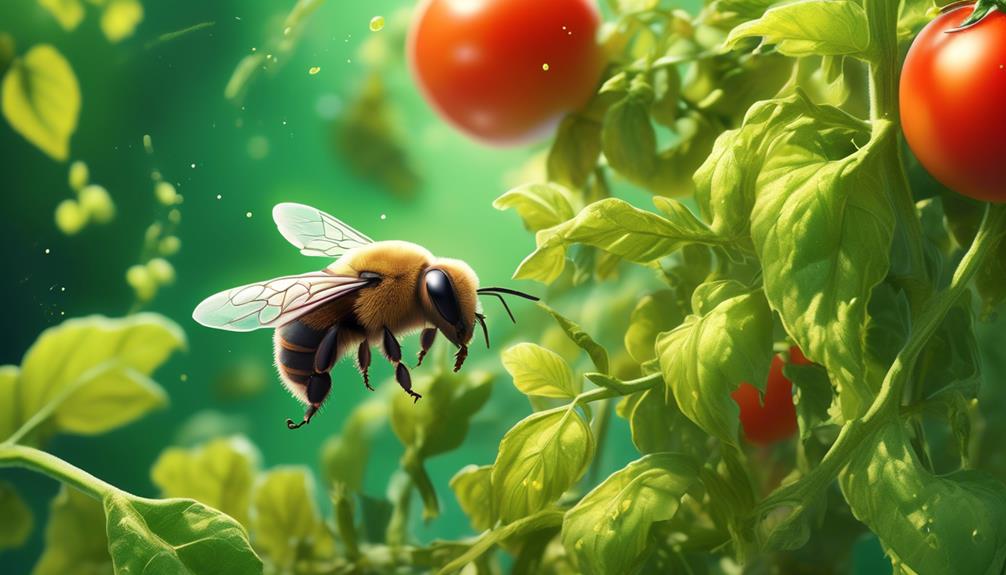
Do Mason Bees Pollinate Tomatoes?
You know what they say, 'The devil is in the details'. When it comes to pollination, this couldn't be more true.
You're probably familiar with honey bees doing the heavy lifting of pollination, but have you ever considered the role of mason bees? Particularly, you might wonder if these industrious insects can pollinate your tomato plants.
There's more to this story, and you'll find the answer is not as straightforward as it seems.
So, let's dive into the fascinating world of mason bees and their relationship with tomato plants.
Key Takeaways
- Mason bees are efficient pollinators and play a crucial role in the growth and fruiting of tomato plants.
- Mason bees use their unique buzz pollination technique to assist in the pollination of tomato flowers.
- Incorporating mason bees into the garden strategy can enhance tomato plant pollination and increase tomato yield.
- Providing nesting sites, a nearby mud source, and a variety of flowering plants can attract and support mason bees for improved pollination.
Understanding Mason Bees
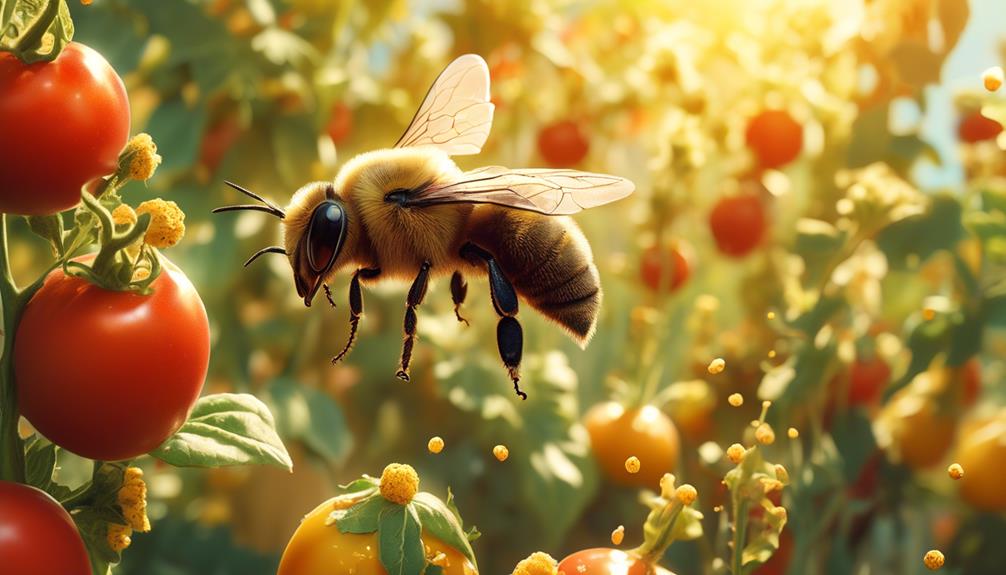
To truly grasp the role of mason bees in tomato pollination, you'll need to understand their unique biology, lifecycle, and behavior.
Mason bees, part of the Osmia genus, are solitary creatures, unlike honeybees. Each female is fertile and constructs her own nest. They're named 'mason' due to their habit of using mud or other malleable materials to build their nests.
Mason bees have short lifespans, with adults living only for about a month. The lifecycle starts when the female lays an egg in a cell within the nest. She then provides pollen and nectar, seals the cell, and repeats the process until the nest is full. Larvae feed on the provided sustenance, develop into pupae, then emerge as adults the following spring.
Their behavior also sets them apart. Unlike honeybees, mason bees aren't aggressive and rarely sting. They're also more efficient pollinators. While honeybees wet pollen and stick it to their hind legs, mason bees are messier, resulting in more pollen transfer.
Understanding their biology, lifecycle, and behavior, you'll start to see why they're often preferred for pollination in agricultural settings.
The Role of Pollination
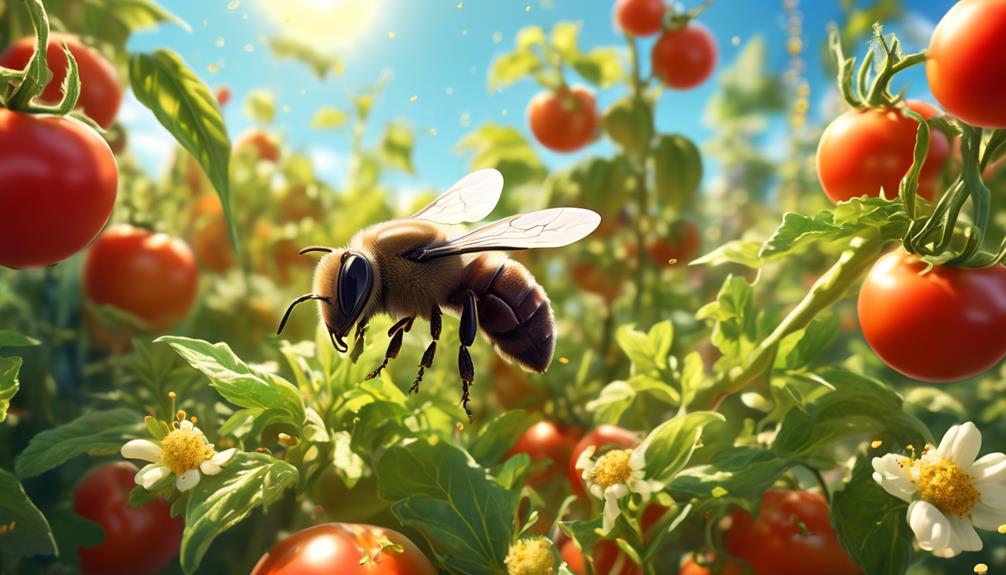
Understanding the distinct traits of mason bees sets the stage for appreciating their critical role in pollination, especially in the case of tomatoes. Pollination, you see, isn't just about bees transferring pollen from one flower to another. It's a highly complex biological process vital to the reproductive cycle of most flowering plants.
When a mason bee visits a tomato flower, it's not just there for the nectar. It's also collecting pollen on its body, which it'll transfer to the next flower it visits. This pollen transfer is crucial because it fertilizes the flower's ovules, leading to the production of fruit – in this case, tomatoes.
Mason bees are particularly efficient pollinators due to their unique traits. Unlike honeybees that wet pollen and stick it to their hind legs, mason bees carry dry pollen on their abdomen. This results in more effective pollen transfer, thus enhancing the pollination process.
Tomato Plant Pollination Process
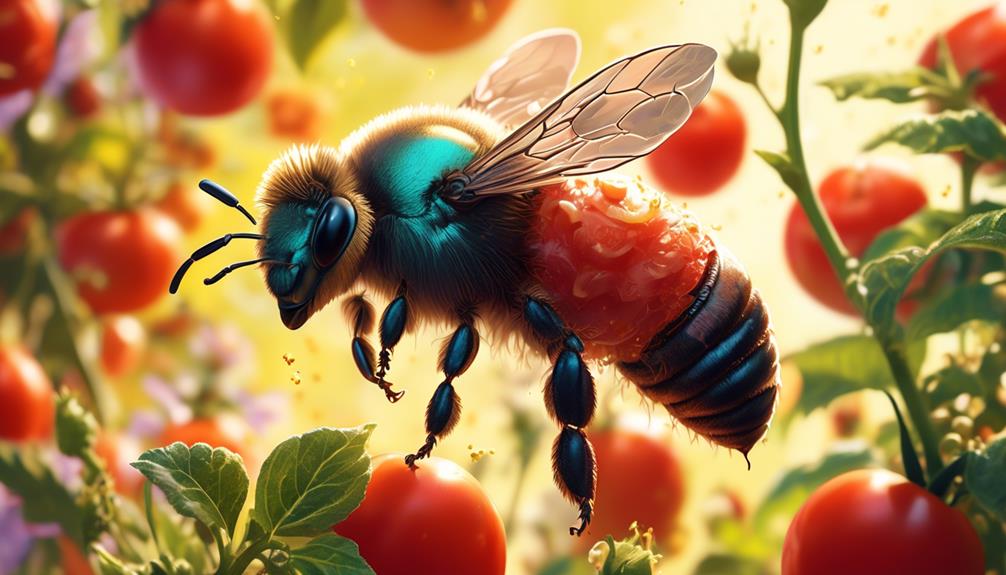
While you may think of tomatoes as self-pollinating, the process is actually more intricate and involves the vital assistance of pollinators like the mason bee. This is because tomato flowers are perfect, meaning they've both male and female parts. The male part, or the stamen, produces pollen, while the female part, or the pistil, receives it.
Typically, the pollen needs to be shaken loose from the stamen and fall onto the pistil. This is where mason bees come in handy. They're excellent at buzz pollination, a process where they grab onto a flower and vibrate their bodies rapidly, causing the pollen to shake loose and fall onto the pistil.
But that's not all. Once the pollen lands on the pistil, it needs to travel down the style to the ovary. This is known as pollen tube growth. If the pollen successfully reaches the ovary, fertilization occurs and a tomato fruit begins to form.
Mason Bees and Tomato Plants
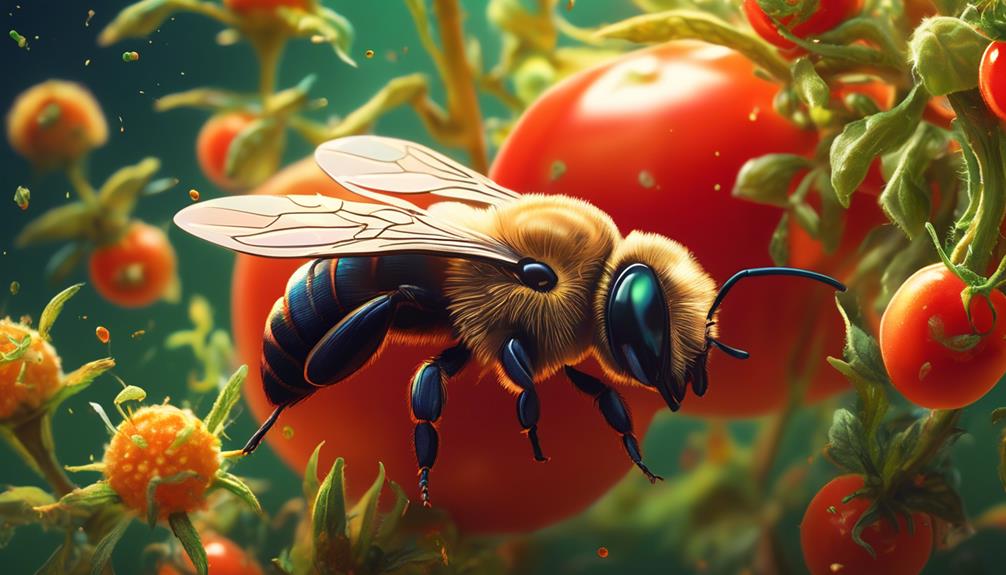
Mason bees, with their unique buzz pollination technique, play a pivotal role in the successful growth and fruiting of your tomato plants. These bees vibrate their bodies at a specific frequency, shaking pollen loose from the anthers of flowers. This technique, known scientifically as sonication, is especially effective for tomato plants whose pollen is trapped within tubular anthers.
Contrary to many other pollinators, mason bees actively collect pollen to feed their offspring, not just for their own consumption. This results in a high degree of contact with the anthers and stigma of flowers, significantly enhancing the chances of pollination. While they're not the only bees capable of buzz pollination, their efficiency and early spring activity make them particularly valuable.
Your tomato plants benefit immensely from the presence of mason bees. They can help increase your yield and improve the quality of your tomatoes. To attract these beneficial insects, consider setting up a mason bee house near your tomato garden. Remember, they're solitary bees, so they don't need a large hive or colony. Just a small, safe space to lay their eggs will suffice.
Enhancing Pollination With Mason Bees
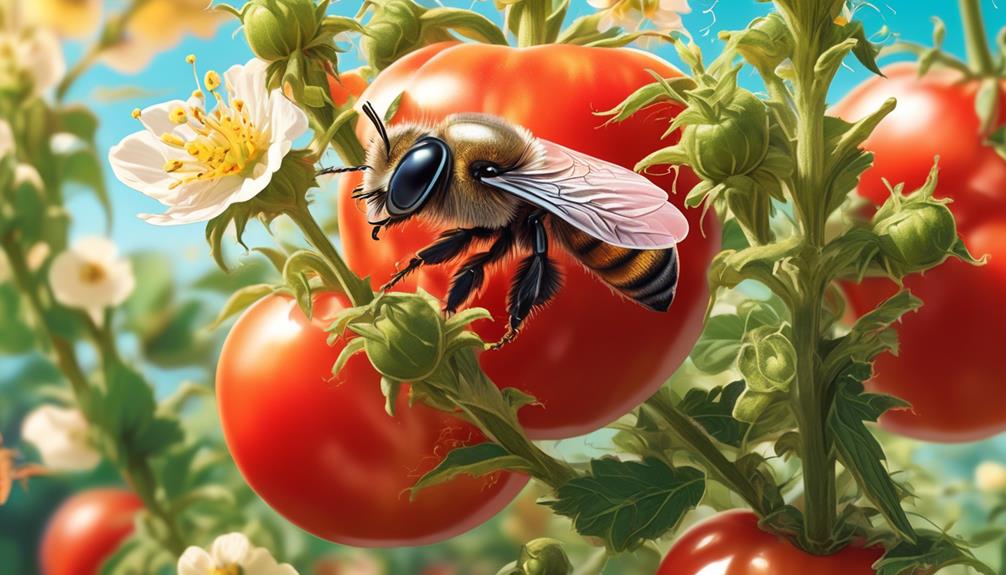
If you're looking to boost the pollination of your tomato plants, incorporating mason bees into your garden strategy can prove to be a game-changer. These industrious little creatures are known for their efficiency and effectiveness in pollen transportation – a critical factor in the fertilization process of your tomatoes.
To attract mason bees, you'll need to create a conducive environment for them. Start by providing nesting sites. These bees prefer small, tubular spaces. You can easily create these by bundling together hollow reeds or bamboo tubes. Place these bundles in a sheltered spot, away from direct rainfall but within the sight of morning sunlight.
Next, ensure there's a mud source nearby. Mason bees use mud to seal off their egg-filled tubes, hence the name. A small, shallow dish filled with soil and water should suffice.
Lastly, plant a variety of flowering plants to provide a consistent source of nectar throughout the bee's active season.
Conclusion
So, you see, mason bees do indeed pollinate tomatoes. Their fuzzy bodies attract pollen like a magnet, aiding in the vital cross-pollination process. However, since tomatoes are self-pollinating, they don't rely solely on these diligent workers.
Nevertheless, having mason bees around your tomato plants can enhance pollination, potentially boosting your harvest. So, don't hesitate to invite these industrious bees into your garden – they're a tomato grower's tiny, buzzing allies.

